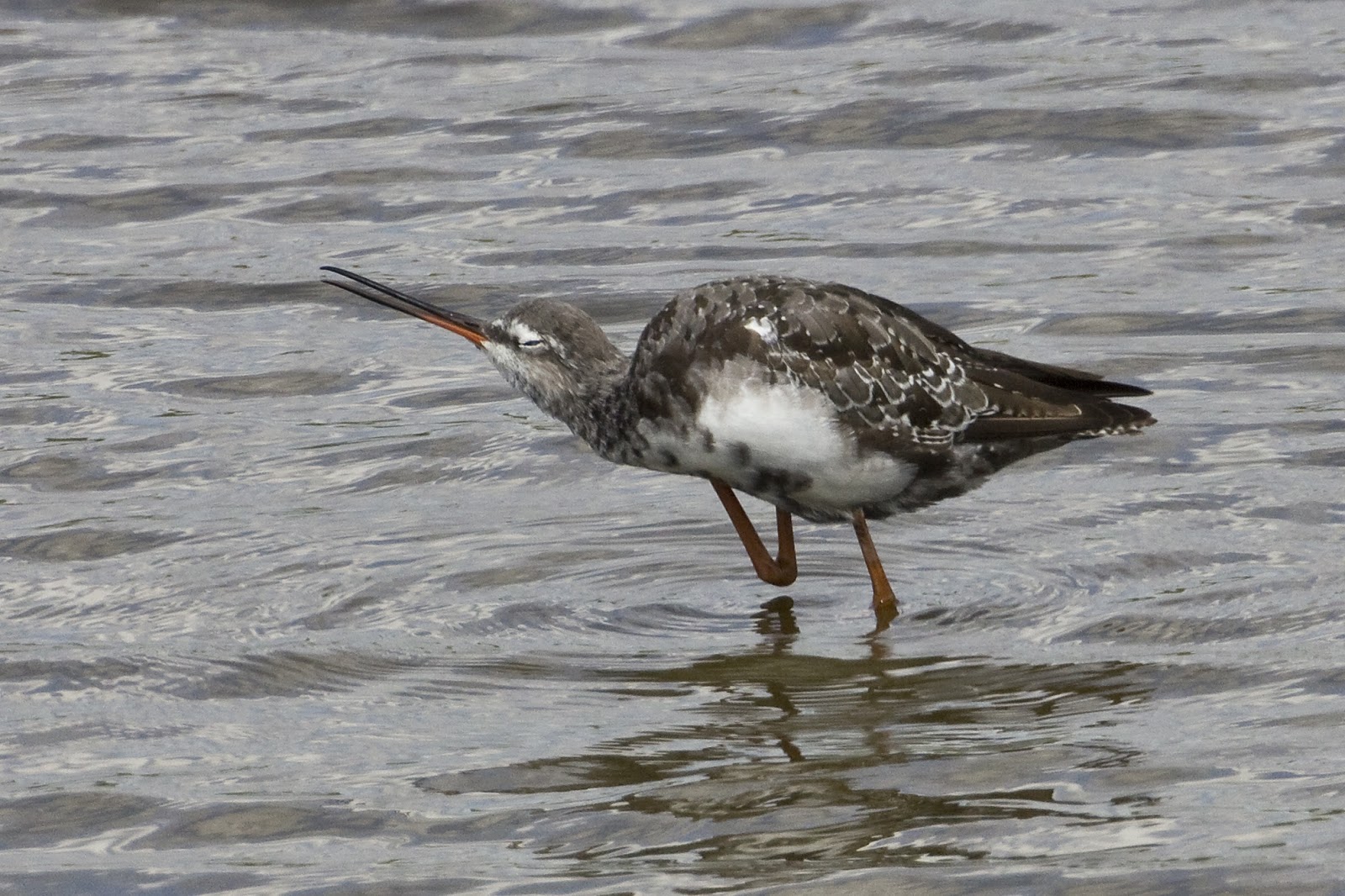Having seen a Curlew Sandpiper at Pennington but then only managing to get a poor record shot of it, I was looking for an opportunity to get a better picture. Reports indicated that one was showing well from the sluice gates on the north wall at Pagham and I thought that if I got there a couple of hours before high tide the incoming water would drive it closer and give me a better picture opportunity. Good thinking but totally wrong. The incoming tide drove it further down the creek and out of site.
Fortunately there was a consolation prize in the form of a Spotted Redshank. It was showing well on the front of the Breech Pool when I arrived and I managed a couple of quick shots before an incoming flight of ducks spooked it and it flew to the back of the pool and took refuge with the Godwits. This put it just out of range for a decent shot.
 |
| Spotted Redshank - still showing some summer plumage |
 |
| Preening |
I walked down to the lagoon and spit hide but I was forgetting that the caravan site is full this time of year and there were too many people around for my liking. I did see a couple of Pipits and a few Wheatear but again these were at a distance.
 |
| Wheatear |
Back on the North Wall and still no sign of the Curlew Sandpiper. The Spotted Redshank remained out of range but the little Egrets were impressive with over 20 birds counted in this one area of the harbour.
 |
| Little Egret Roost |
The weekend saw me visiting family down near Canterbury and that gave a good opportunity to call in at Dungeness RSPB on the way home to look for Wood Sandpiper.
There were a couple visible from the Firth hide with one giving reasonable picture opportunities.
 |
| Wood Sandpiper |
 |
| Wood Sandpiper |
Good record shots and I was pleased to have them but there is a level of frustration at always being that little bit too far away and having to rely on heavy crops. Last weeks Long-billed Dowitcher was a good example. I came away with a decent record shot but then saw a digiscoped shot on the web that showed far more detail than I had achieved. I usually expect the dirty atmosphere and heat haze to be the limiting factor for both approaches but this showed that there are times when the more powerful optics have the edge. This will be more so as we move into the crisper cleaner air of the winter. Perhaps I will have to try doubling up on the extenders to get a better balance between range and quality.
Also showing, but well camouflaged on the mud, was a Common Sandpiper.
 |
| Common Sandpiper |
 |
| Ringed Plover |
And there were late nesting Common Terns on the rafts from the Denge Marsh Hide.
 |
| Common Tern chicks - still to fledge |
Also had a walk on the North Downs looking at the butterflies and when I got home I was pleased to find that I had managed to capture an Essex Skipper instead of the Small Skipper I was expecting.
 |
| Essex Skipper - showing sex brands parallel to wing edge |
 |
| Essex Skipper - and black tips to the antennae |
No comments:
Post a Comment